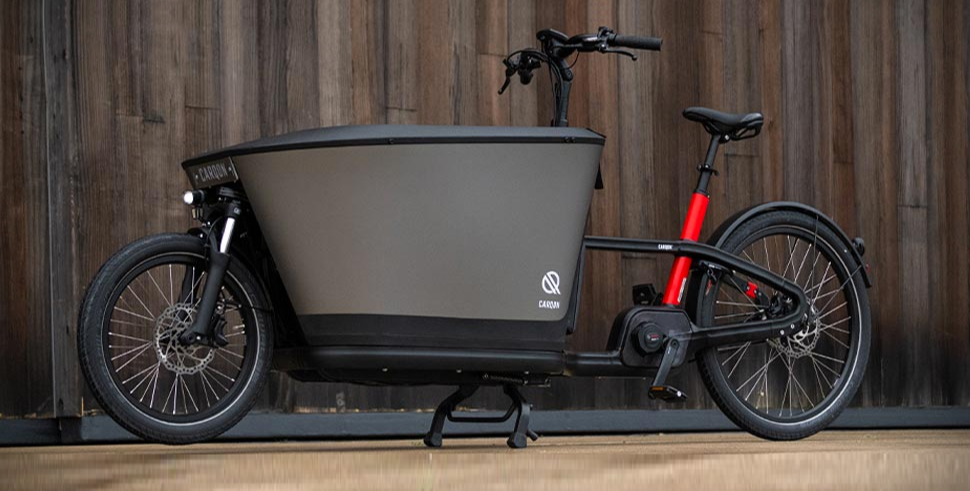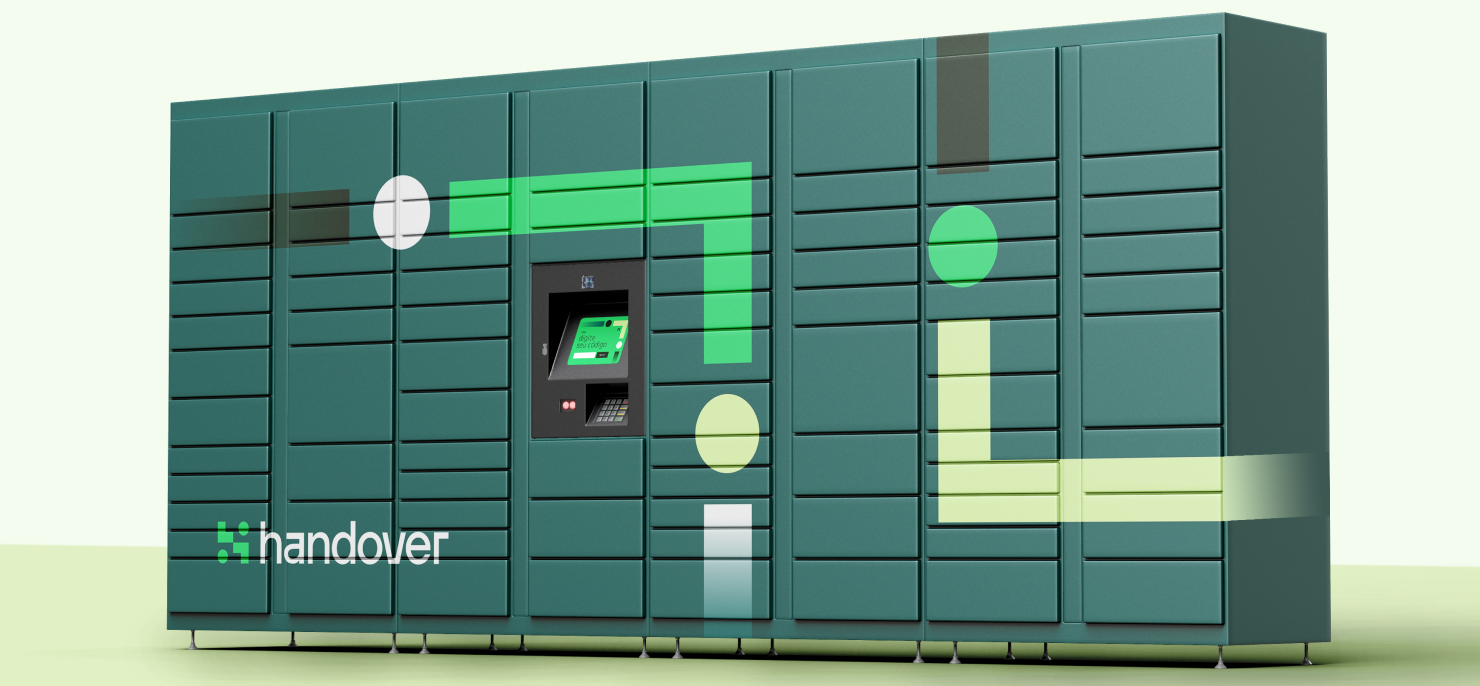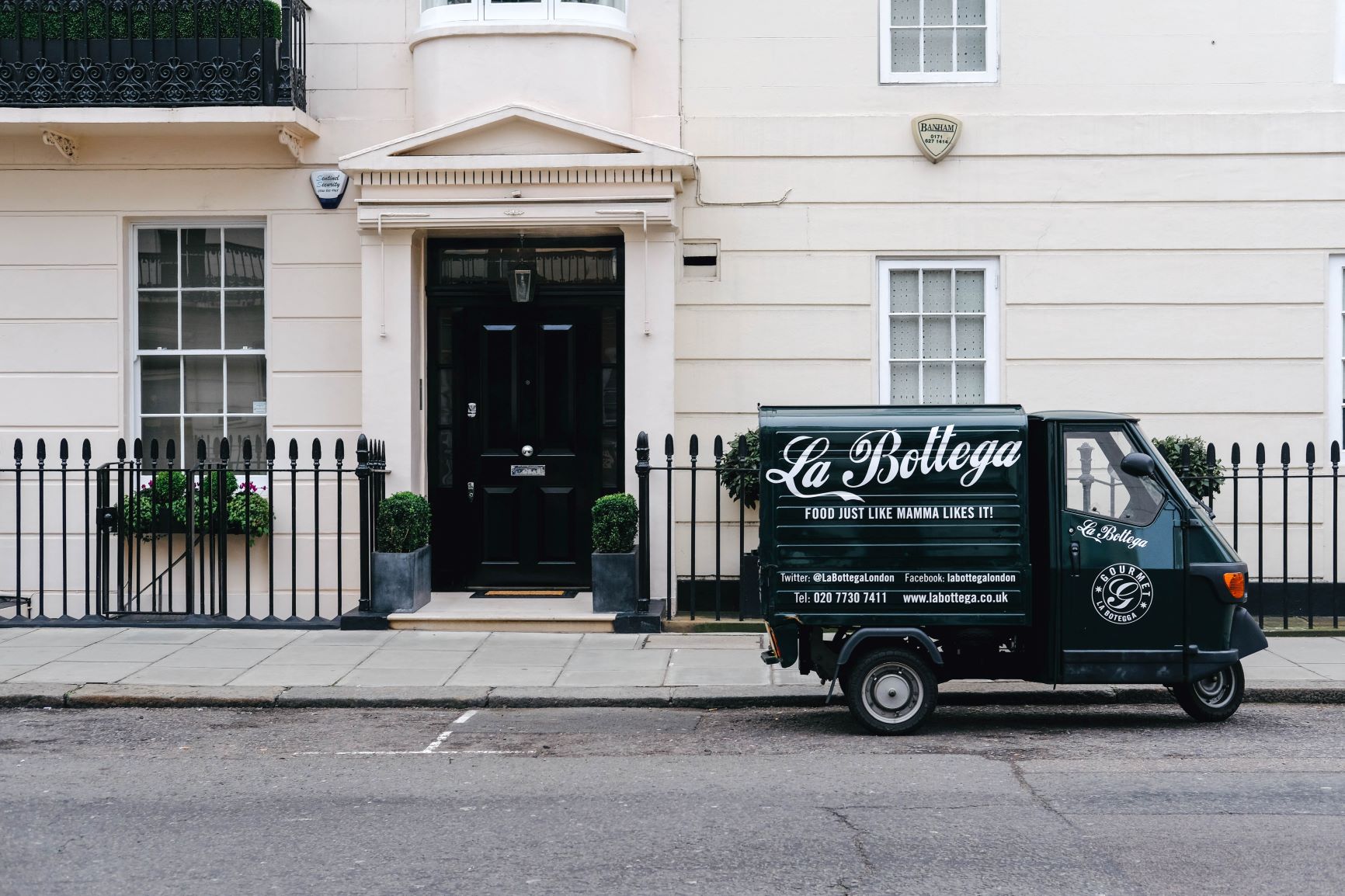Last mile delivery is the most complex distribution stage, because it involves many variables that impact its efficiency, and the most important in its relationship with the customer, because it is closely followed by him.
When a person makes a purchase in an online channel, the clock starts ticking until the order reaches its destination.
In this period the order is prepared and dispatched for transportation to the customer, but it cannot be too long.
The customer wants to have in hand the product that he has seen only through the screens and therefore waits with great excitement and expectation.
This makes him strict with the delivery and attentive to details, and even delays of a few hours are no longer accepted.
Understand below how this delicate dynamic relates to the last mile, and how to operate it with quality.
What is Last Mile delivery and why is it so important?
Last mile delivery is the final stage in the delivery of a load, between the distribution center and its final destination, the customer.
His satisfaction with the brand is directly influenced by his experience with last mile.
If the consumer feels let down by the experience, he can spread bad reviews on complaint portals or social media, influencing others. And those who are interested in the brand will easily find these reports.
According to a recent survey by Opinium Research, 90% of consumers do not buy again when they have a bad experience.
From this number we can draw two conclusions. The first is that there is great competition in the retail business: if your company is not prepared to give good delivery conditions, another one is, and will win your customer.
The second one is that this final process makes up the whole experience that a person will have with your store, so it is not enough to invest only in the steps before the purchase confirmation.
It is necessary to show genuine consideration for their satisfaction by working after the purchase with a good last mile delivery. It is decisive in building the relationship with the consumer.
Besides the customer loyalty factor, there is the big cost involved with the last mile delivery. Because it is an expensive step, responsible for something like 30% to 50% of the shipping expenses, because of multiple inefficiencies and the need to be flexible.
What can happen in the Last Mile
Particular situations, such as distance, road conditions, traffic, theft occurrences, breakdowns, and driver performance vary from delivery to delivery.
These diverse variables require large resources to manage them effectively in order to meet the established delivery deadline.
At the same time, the company cannot invest too much in this step, because it makes shipping too expensive. High shipping costs are the main reason for giving up on purchases, ahead of even long delivery times, according to many surveys.
How to improve the last mile
Diversity of delivery options
In the technological age we live, there is a greater possibility to customize services according to each person’s interest. So the consumer expects to have more power of choice.
In delivery logistics, shipping price and delivery time are the main deciders of choice. If there used to be a single condition that balanced the two factors, today you have to cater to the customer who prioritizes delivery time over freight, and vice versa.
Therefore, the store should provide everything from economy delivery, with a longer lead time, to if possible same-day delivery, even if it is more expensive.
And it is also important to offer the alternative of scheduling the delivery, especially for that customer who does not usually stay at home
This is because cases in which the delivery person cannot find the recipient at home and needs to return with the goods are frequent. This not only generates costs that make the last mile expensive, but also stress for the customer.
To avoid frustration with this mismatch, it is better if the customer can choose the best date to receive the delivery person. Another option is for him to pick it up in smart lockers.
Thus, he can choose not only the best pick-up date, but also the location that suits him best (shopping malls, parking lots, stores, etc., where these smart lockers are usually installed).
Customer communication
The retailer can calm the customer’s anxiety by giving constant updates about his delivery.
In addition to the tracking code, tracking systems and GPS are needed so that the customer can follow every step of the last mile delivery, seeing in real time the location of the package.
This data is important for both the consumer and the company, which can query the status of a problem on the way or identify inefficiencies to be corrected.
Another investment that the retailer can make in his contact with the customer is the channel through which he communicates.

In this way, it is interesting that he sends messages in channels such as SMS and E-mail, advising when they have issued the fiscal documents, when they have sent the order to the carrier, or if the package is on its way to the customer.
In addition, brands that are dedicated to customer experience have invested in platforms and apps, which are more comfortable to handle to track the driver’s trajectory and step updates.
Serviços de diferentes transportadoras
According to a survey released by UPS, 6.4 billion packages during 2021 were delivered by UPS. However, relying so heavily on a single delivery company leaves retailers vulnerable to possible changes from that company.
Without fully knowing the work of a carrier, hiring it as your only partner is risky. For if it does not have all the competencies, the store will be the one with the damaged reputation in the eyes of the consumer.
Therefore, it is best to have different companies available.
Identify those with quality service, both shorter lead time, scale, agility with reverse logistics and cost-effectiveness, and data sharing structure, so important for retailers and the customer today.
Also, having different carriers can be a geographical strategy, since one will have more coverage in a region than another company.
That is why it is interesting to have instant freight value and delivery time calculations, choosing the carrier with the best conditions for each destination.
Logistical capillarity
As mentioned before, it is important to think about the last mile delivery strategy in order to serve with quality each region in which your company wants to operate.
Besides a good distribution of carriers, it is very advantageous to have several distribution centers. They can be either more traditional locations with storage of goods, or those with a more modern structure, with cross docking or transit point.
In these modalities there is the dynamic of fast receiving, organizing, and dispatching orders; the products do not remain stationary in the warehouses for more than 24 hours.
No matter the format, with more outbound locations, distances to the final destination are shortened. This reduces time, probability of transit and theft, and also last mile costs.
Variety of vehicles
In the last mile, with individualized deliveries, trucks, vans, and even cars are replaced by smaller vehicles.
Motorcycles and bicycles adapt well to shorter distances, besides being less expensive, they also move better in large urban centers. However, buses have also been consolidating themselves as a collective transportation solution.
Let’s see why these modalities are on the rise.
Bicycle: it is a very attractive option for the low costs involved, because it doesn’t need fuel, and has much cheaper maintenance. Like the motorcycle, it is not limited by traffic jams, and still has the advantage of having cheaper insurance than the bike (very interesting for companies that want to use it in scale).

In addition, it is sustainable, because it does not emit pollutants. This is as positive for the planet as it is for your company, because there are more and more conscious consumers who prioritize green companies.
Soon there are several manufacturers developing bikes for the last mile, bringing electric, or cargo, models that can handle at least 200 pounds of product.
Buses: this means of transportation has two enviable characteristics in the logistics business, the capillarity between thousands of cities and the great circulation of vehicles.
The innovation is to use spaces in the luggage compartment of travel buses to transport packages, which need to wait only a few minutes to get a ride.
This is a cheap and fast solution that has become popular among retailers, and can help expand beyond the regions.
Software to assist Last Mile
TMS (Transportation Management System)
This Transportation Management System brings together various data in an integrated interface, which shows all logistics and transportation operations.
It suits the logistics chain of several companies, which involve third parties in their processes, be it clients or service providers, allowing a constant flow of information among all.
So it is possible to track and control all the displacements made, as well as the commercial and financial data involved in each one.
For the last mile specifically, some relevant functionalities are real-time cargo tracking (with logging of possible mid-way events), budget calculation for each route, and invoice registration.
Additionally, the performance indicators of each carrier, such as the delivery rate, help in choosing the most reliable ones.
Fleet Management
A delivery cannot be delayed because of an unexpected problem with the vehicle fleet. Besides damaging the brand image and your earnings, this also makes the last mile more expensive.
Maintenance that repairs damage is much more expensive than maintenance performed in advance, which prevents failure. To have an idea of when to test your fleet, the administrator can use a Fleet Management System.
The software registers information such as the vehicle’s age, total distance traveled, fuel consumption, tire wear, maintenance history and the next ones to be performed, etc.
In addition, the system also provides operating information while the vehicle is on the road, such as stopping intervals and speed.
Routing system
This software is fundamental to optimize the last mile route, considering all the destinations it will serve in one trip.
It is able to cross-reference many variables to find the best route, in terms of cost, time, and also structure, so as not to damage the cargo.
The system registers the actual conditions that affect these factors such as tolls, traffic, and mandatory driver stops, which go into the final calculation.
The route planner is also very important for the good work of the driver, because it instantly updates the route, in case there are any unforeseen events, and also plans his delivery journey, ensuring that all deliveries are made, without wearing him out too much.
The future of last mile delivery
With the growing connectivity of the population and more attractive conditions for online shopping, it is estimated that the number of last mile deliveries will increase by 78% by 2030 in the world’s most important cities.
The data, brought by an extensive research on the Future of the Ecosystem from Last Mile, is a starting point for analysis on how this process will affect the dynamics of cities.
The first major impact will be on urban mobility, with an expected 36% increase in the number of vehicles circulating. This leads to the second major impact, emissions, which will be intensified by 30%.
Thinking about this scenario, the biggest technology and logistics companies have been developing alternative means of delivery, which do not need to travel on the street together with other vehicles, or that are electric, for example.
Some of these innovations, led by startups and the largest companies in the market are:
- Smart Lockers
- Crowdshipping
- Artificial Intelligence (AI)
- Internet of Things (IoT)
- Drones
- Robots
Smart Lockers
Smart lockers also optimize the last mile, through transit point and cross docking.
For stores that have distribution centers that are too far away from their end customers, the last mile distance is too great. This means that the delivery person devotes a lot of time and energy to just one sale, making the step more expensive and making it impossible to expand sales.
To do this, companies install transit points in intermediate locations, closer to regions with high demand.
So trucks or vans loaded with goods from various customers can transport them to the transit point. There, the delivery person picks up the package and drops it off at the customer’s door.
Notice that part of the distance the delivery man originally traveled is now done with larger vehicles, which carry more products at once (cheaper).
Thus, last mile distances are reduced, reducing costs and also the unforeseen events typical of this stage.
The older transit points are small hubs, involving significant costs.
Smart lockers can replace them as compact and secure places to receive goods. They are a cheaper and more technological investment, making the operation easier to manage.
Cross docking is similar to transit point, but its big difference is that it involves different suppliers delivering to the same customer. That is why it is widely used by retail chains and marketplaces, which combine several products for a single delivery.
The application of smart lockers in distribution logistics is a recent innovation, but these devices have been on the market since 2011, when Amazon launched click & collect.

Crowdshipping
In the same vein as shared trips, crowdshipping connects autonomous delivery drivers to people who hire the delivery service.
Within the collaborative economy, this modality gives greater flexibility to establishments that don’t want or can’t depend on their own delivery drivers, or that are investing in same day delivery, because this is a great way to find nearby available delivery drivers.
On the other hand, people who sign up for the platform have the autonomy of choice. They decide the deliveries they want to make and the type of vehicle, whether by car, bike, on foot, or public transport.
Therefore, several logistics companies are already investing in their own crowdshipping platforms and APPs.
Autonomous Vehicles
Advances in AI and IoT technologies make it safer for autonomous vehicles such as cars, vans, and trucks to pass through city streets.
In logistics, its great advantage is to move at night, when there is less traffic, which translates into less cost and travel time. For the urban dynamics, this mitigates the effects of the multiplication of delivery vehicles on the roads.
These autonomous vehicles are also less harmful to the environment, as most companies design electric or hybrid models.
Drones and Robots
Both solutions are very innovative because they do not travel on the streets, therefore they do not get stuck in traffic jams and can travel by more direct routes to their destination.
Drones, for example, are ideal for light and fast deliveries, and are a great bet for same day delivery. The FAA (Federal Aviation Administration) has already certified companies to carry out deliveries with drones in the USA..

With robots, the advantage over drones is that they have well insulated boxes, ideal for transporting food, for example.
In terms of movement, they have sensors and AI software to be able to dodge people and obstacles on their way. When they arrive at the door of their destination, they send a message to the customer, who can then open the robot with commands from his cell phone.
It is worth mentioning that both pieces of equipment are also electric and less polluting.
Conclusion
As the number of consumers using online commerce grows, the demands on the shopping experience are increasing.
Good conditions for delivery time, freight and product shipment tracking and punctuality are important for an e-commerce competitiveness. And for the success of this post-sale stage, it is essential to invest in a good last mile delivery
It must have good management systems that can process a lot of information in real time and ensure that all deliveries are made on time and at the lowest possible cost.
While software optimizes processes, the logistics chain must be structured, with competent transport options and good spatial distribution.
In addition, companies should keep an eye out for new strategies that bring competitive advantage over others. One of the technological innovations to watch out for are smart lockers.
Want to know more? Meet handover, a developer of intelligent lockers that, in addition to cross docking, act as transit point, click & collect and intelligent mailbox.
